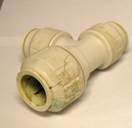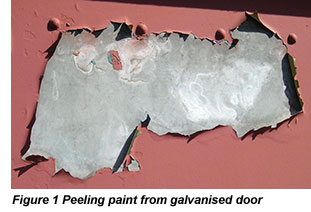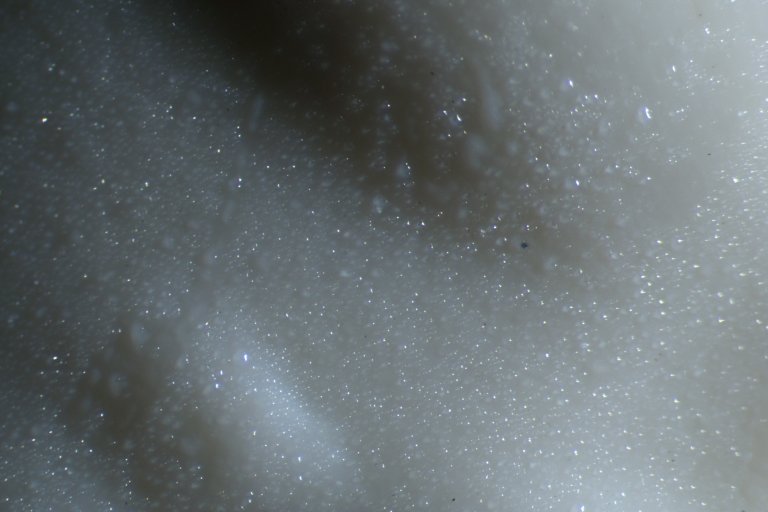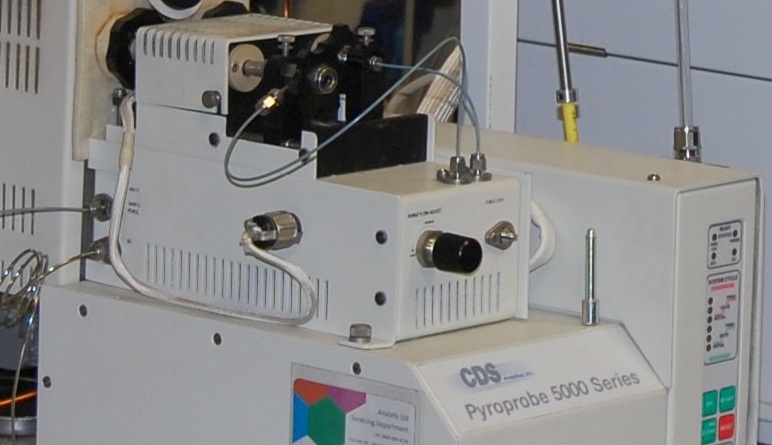Plastics, Rubbers and Coating Degradation
 Plastics (polymers), rubbers or paint coatings can suffer degradation despite generally being considered robust to the everyday environment. They may be still attacked by an unexpectedly harsh environment such as UV, radiation or even chemicals and solvents that they may not be compatible with. Additionally, if the materials and compounds in the formulation is not optimised or has drifted out of the process window or indeed an alternative supplier has been sought there can be problems with component mixing or additives like stabilisers and plasticisers all of which can give less than ideal functional performance and degradation.
Plastics (polymers), rubbers or paint coatings can suffer degradation despite generally being considered robust to the everyday environment. They may be still attacked by an unexpectedly harsh environment such as UV, radiation or even chemicals and solvents that they may not be compatible with. Additionally, if the materials and compounds in the formulation is not optimised or has drifted out of the process window or indeed an alternative supplier has been sought there can be problems with component mixing or additives like stabilisers and plasticisers all of which can give less than ideal functional performance and degradation.
Polymer degradation symptoms can include environmental stress cracking ESC, solvent swelling, loss of elasticity and embrittlement, hydrolysis, oxidation, depolymerisation and discolouration dependent on the type of material and the environment the material is exposed to.
 LPD Lab Services and its consultants have a significant amount of experience solving polymer, rubber and paint coating problems which include: -
LPD Lab Services and its consultants have a significant amount of experience solving polymer, rubber and paint coating problems which include: -
- Depolymerisation, loss of plasticisers, embrittlement or incorrect polymer curing or choices of stabiliser additives can lead to premature failure of plastics and rubbers. These symptoms are detectable by a combination of FTIR, FTIR Microscopy, GC-MS, DSC and pyrolysis GC-MS with the correct application of solvent extraction, headspace or pyrolysis sample preparation techniques.
- Embrittlement due to further cross-linking induced by ultra-violet light UV: The extent can be investigated by FTIR and solvent extraction GC-MS or pyrolysis GC-MS can be used to assess the degradation pathways.
- Discolouration induced by ultraviolet light (UV). XPS can measure the surface changes that result including oxidation.
- Swelling of the polymer caused by solvent ingress is best investigated by FTIR and GC-MS to determine if the, often complex, formulation is correct. Even if the aggressive solvent has all evapourated it is often possible to infer damage by SEM from the resultant cracks and crazing. In composite materials the size that bonds the fibres to the matrix is crucial for maintaining barrier properties along the interface.
- Environmental Stress Cracking ESC of plastics, paint coatings and plumbing components.
- Exposure to a high temperature can degrade a polymer material and even graphitise it. These effects can be seen by FTIR, GC-MS and XPS if it is a surface effect. Polymer lifetime in heated conditions can be estimated by TGA.
- Paint bubbling or lifting can be a result of corrosion of the substrate and this is often a result of poor interfacial adhesion to the substrate or it acting as a poor diffusion barrier related to a poor formulation.
 Polymer degradation can often begin during the injection moulding or extrusion process, where the polymer is overheated and antioxidants or antiozoants become exhausted and the polymer backbone begins to oxidise. The carbonyl index, derived from FTIR, can indicate if an oxidative process has begun, by comparing virgin polymer with moulded or extruded products.
Polymer degradation can often begin during the injection moulding or extrusion process, where the polymer is overheated and antioxidants or antiozoants become exhausted and the polymer backbone begins to oxidise. The carbonyl index, derived from FTIR, can indicate if an oxidative process has begun, by comparing virgin polymer with moulded or extruded products.- Thermo-oxidative degradations follow a free radical mechanism similar to UV degradation like that seen in PVC which can be detected by FTIR. Once initiated these processes can continue during the now shortened lifetime of the product. Some of the breakdown products are volatile and leave the degrading sample, while others like macro alkyl hydroperoxide R-OOH species remain and are indicated by an increase in hydroxyl OH functionality in the degraded polymer by FTIR.
- Polybutylene PB hot water pipe degradation, failure and leakage.


